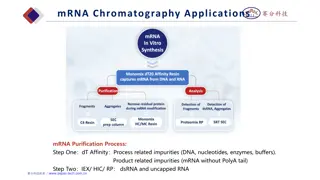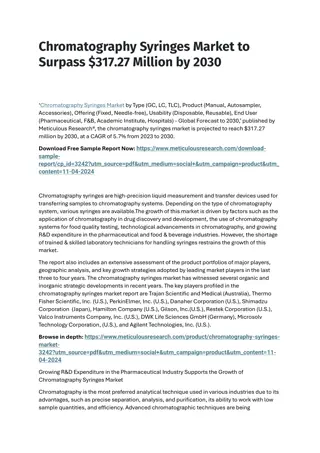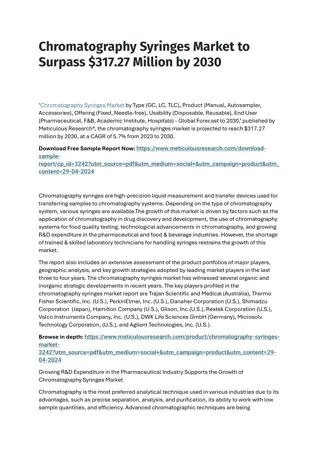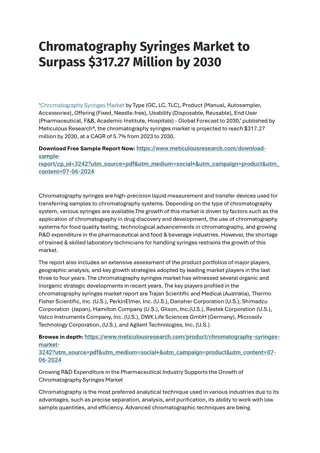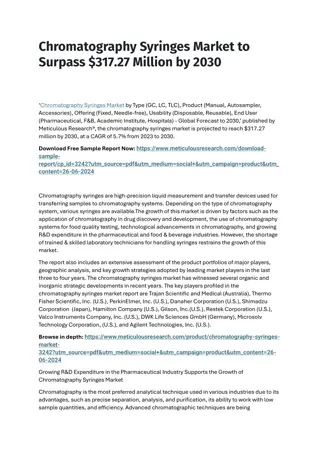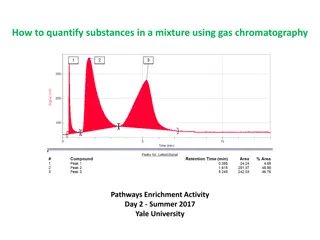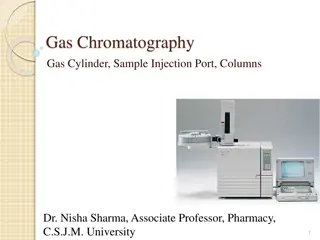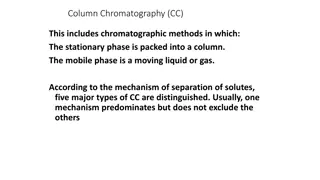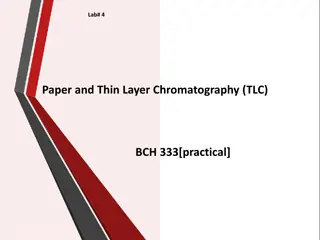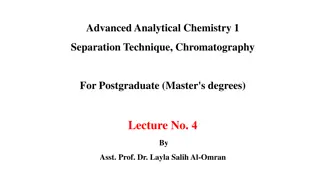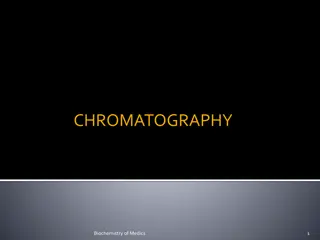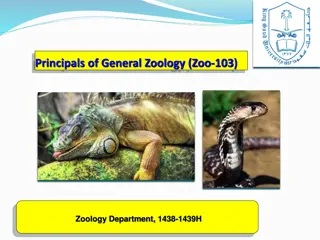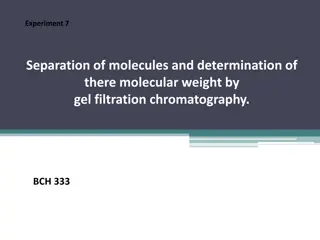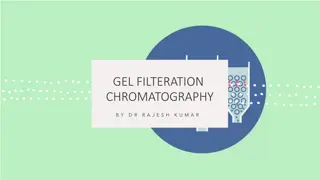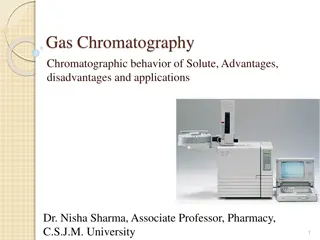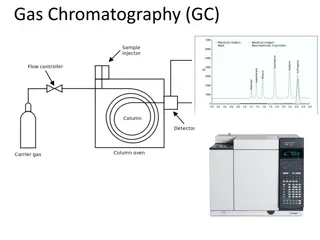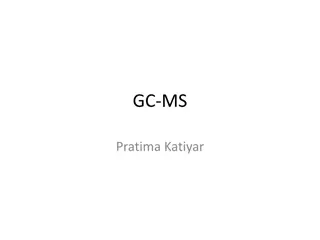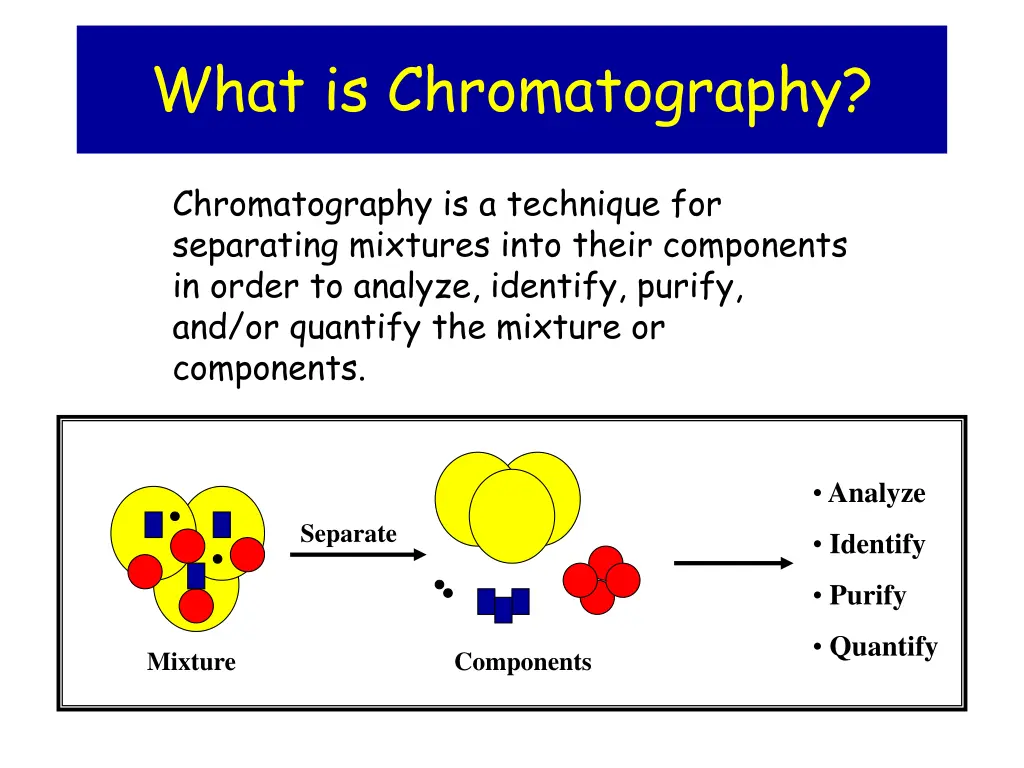
Understanding Chromatography Techniques
Chromatography is a versatile technique used to analyze, separate, identify, purify, and quantify mixtures and their components. This process finds applications in various fields such as pharmaceuticals, healthcare, forensics, environmental monitoring, and manufacturing. Types of chromatography include liquid, gas, paper, and thin-layer chromatography, each offering unique separation methods. Explore how chromatography plays a crucial role in scientific investigations and real-world scenarios.
Download Presentation

Please find below an Image/Link to download the presentation.
The content on the website is provided AS IS for your information and personal use only. It may not be sold, licensed, or shared on other websites without obtaining consent from the author. If you encounter any issues during the download, it is possible that the publisher has removed the file from their server.
You are allowed to download the files provided on this website for personal or commercial use, subject to the condition that they are used lawfully. All files are the property of their respective owners.
The content on the website is provided AS IS for your information and personal use only. It may not be sold, licensed, or shared on other websites without obtaining consent from the author.
E N D
Presentation Transcript
What is Chromatography? Chromatography is a technique for separating mixtures into their components in order to analyze, identify, purify, and/or quantify the mixture or components. Analyze Separate Identify Purify Quantify Mixture Components
Uses for Chromatography Chromatography is used by scientists to: Analyze examine a mixture, its components, and their relations to one another Identify determine the identity of a mixture or components based on known components Purify separate components in order to isolate one of interest for further study Quantify determine the amount of the mixture and/or the components present in the sample
Uses for Chromatography Real-life examples of uses for chromatography: Pharmaceutical Company determine amount of each chemical found in new product Hospital detect blood or alcohol levels in a patient s blood stream Law Enforcement to compare a sample found at a crime scene to samples from suspects Environmental Agency determine the level of pollutants in the water supply Manufacturing Plant to purify a chemical needed to make a product
Types of Chromatography Types of Chromatography Liquid Chromatography separates liquid samples with a liquid solvent (mobile phase) and a column composed of solid beads (stationary phase) Gas Chromatography separates vaporized samples with a carrier gas (mobile phase) and a column composed of a liquid or of solid beads (stationary phase) Paper Chromatography separates dried liquid samples with a liquid solvent (mobile phase) and a paper strip (stationary phase) Thin-Layer Chromatography separates dried liquid samples with a liquid solvent (mobile phase) and a glass plate covered with a thin layer of alumina or silica gel (stationary phase)

